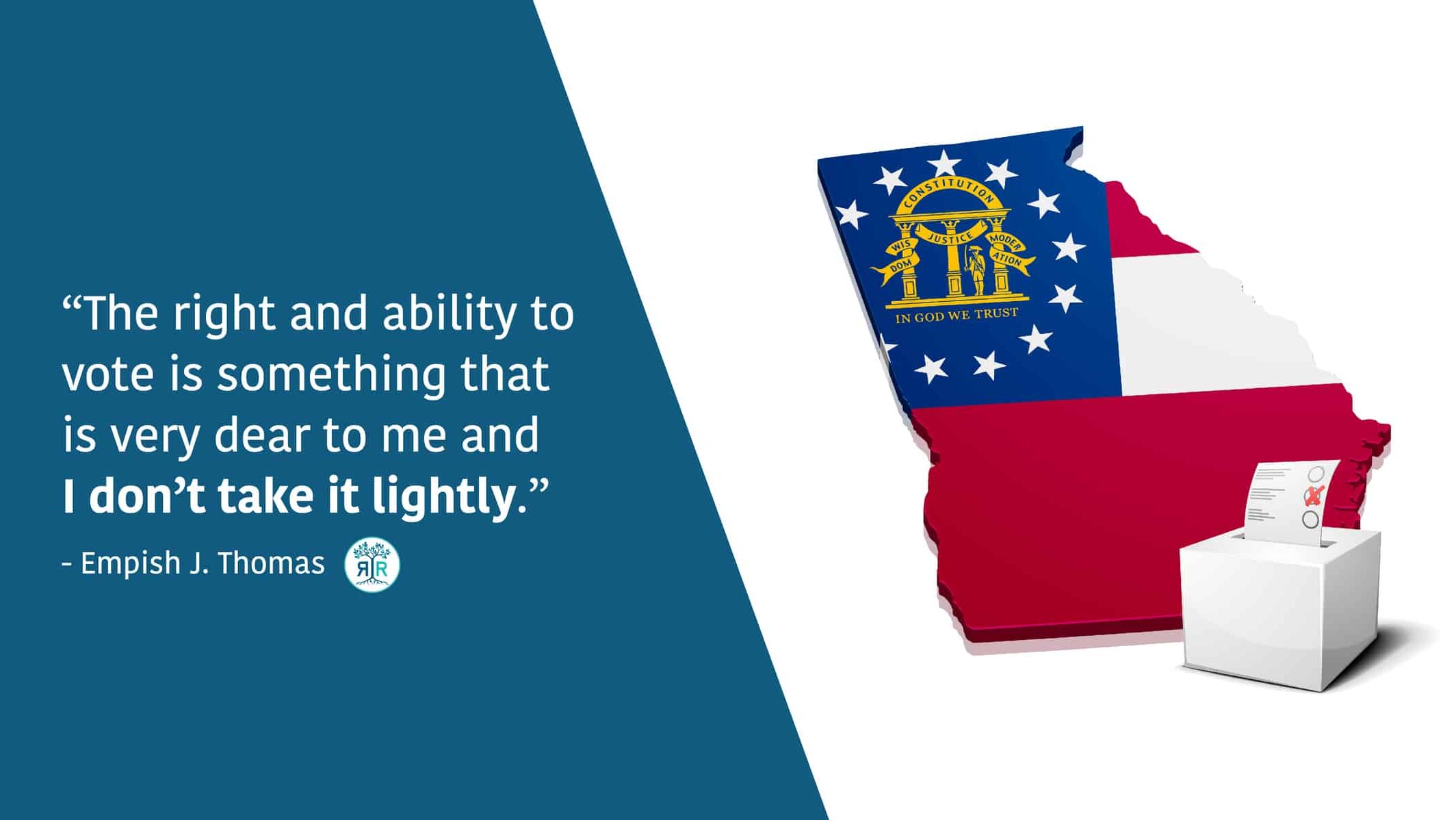Voting Isn’t Always Accessible For Blind People, But I Refuse to Not Vote
As an African-American who grew up with parents who lived under segregation I have known and understood the importance and power of the right to vote. Many times my dad, who was born in Birmingham, Alabama, would constantly tell me that when I grew up to always have handy a copy of my government ID, library card, and voter’s registration card. Today I am a 47-year old with vision loss, and guess what I have in my purse? You got it, my government ID, my library card and my voter’s registration card. All with braille labels on them, of course!
On May 22, 2018, I voted in the Georgia primary elections. I have to admit that the primaries have not always been my priority but I decided this year to get more actively involved in my local elections. I had been reading about the candidates, watching the debates, participating in conference calls, and attending city council meetings. The right and ability to vote is something that is very dear to me and I don’t take it lightly. As my parents would always remind me “People fought and died so that you could have the rights that you have.”
When I first went blind some 20 years ago, I struggled with the fact that a sighted person had to read my ballot and make my selections. At the time I was not proficient in braille and not fully aware of the various options for blind and visually impaired voters. Years passed and I began to hear about the accessible voting machines. One day I read an announcement that a demonstration of the machine was going to be held at my local vision rehabilitation center. I was very excited and went there to learn how to use the machine. I found it to be very simple and easy to use. I placed the headset on and listened to my candidate options. There was a keypad, very similar to one on a telephone with a bump dot on the number 5 key. That keypad is what you use to make your choices for the various candidates. Then, when you get to the amendments to a bill or pieces of legislation, it will be read out to you. Next, you press a number that corresponds to either yes or no. Once you are finished, you can review your ballot and then press the submit button. After experiencing this demo, I was hooked!
Using the accessible voting machine has been bittersweet for me. During the recent primary I could barely hear in the headset even with the volume at full capacity. It seemed that the volume faded in and out depending on the section of the ballot I was in. I also noticed there was a lot of static. I had to press my headset to my ear just to get through my ballot. I alerted the poll worker to try to make adjustments but nothing seemed to work. So I just pressed through and did the best that I could and finished voting. Later, I went home and filed an email complaint with the Secretary of State’s office only to get a lukewarm reply. I have since been working with an advocate to assist me in pushing harder on voting access. The ability to hear my ballot read to me is not just a cool idea but essential since I am blind and can’t see any of the ballot on the screen. If I can’t hear the information then I can’t vote. Unfortunately, this is not the first time I have had problems with the accessible voting machine.
I once went to my local precinct and the accessible machine was still in the box. I used my advocacy skills to gently but firmly inform the poll workers that they needed to remove the machine out of the box and set it up and that I would be patient and wait. I refused to vote any other way. This was done and I voted. Another time, the machine had technical difficulties and a poll worker had to restart it. Again I was patient and cast my ballot. But during the 2012 presidential election it took three tries before my ballot was cast. I was incredibly frustrated and so was the poll worker who assisted me. At this point I had to figure out another plan of action because I refused to stop voting.
I continued filing complaints with the Secretary of State’s Office. For one of my complaints a representative actually came to my home for a follow up to get a verbal statement. She was very concerned about what I shared in my email complaint. She wanted me to know that the State of Georgia was trying hard to improve their accessibility efforts for blind and visually impaired voters. I was very glad to hear that. But since my local precinct was not always reliable; I made an executive decision. During the 2016 presidential election I voted at the election headquarters and I voted early! I felt this particular election was way too important to mess around with faulty equipment. I wanted to be sure that my vote was counted. I got up early and took the bus. When I arrived there was no line and things went smoothly. But the best thing of all, no problems with the accessible voting machine!
I successfully cast my ballot.
Although my experience with accessible voting machines has not been stellar, I refuse to give up. I believe in advocating and fighting for what is right. I realize that I can’t do this alone, but together, we can fight to improve voting accessibility.
About Rooted In Rights
Rooted in Rights exists to amplify the perspectives of the disability community. Blog posts and storyteller videos that we publish and content we re-share on social media do not necessarily reflect the opinions or values of Rooted in Rights nor indicate an endorsement of a program or service by Rooted in Rights. We respect and aim to reflect the diversity of opinions and experiences of the disability community. Rooted in Rights seeks to highlight discussions, not direct them. Learn more about Rooted In Rights



